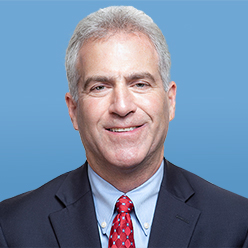Iran’s threats to America’s global interests are mounting as the Islamic Republic celebrates its 40th anniversary, and these threats mock repeated U.S. efforts over the years to appease a dangerous regime.
Tehran is developing longer range and more sophisticated missiles that can reach U.S. and Israeli targets; building weapons factories in Syria in hopes of establishing a permanent military presence near Israel; investing growing sums to fund, train, and direct terrorist operations; and cracking down ever more harshly at home as opposition to the odious regime continues on multiple fronts.
These developments remind us (if, alas, anyone needs reminding) that a regime that was born from the fires of a theocratic revolution in 1979 maintains its foundational fervor; that its ambitions extend far beyond its borders; that the United States and its allies would be better advised to ramp up the political and economic pressure on the regime rather than launch more misguided efforts to coax it to moderation; and that the West should put its moral voice behind the long-suffering Iranian people.
“[T]he hardliners are still very much in control of Iran,” former British Prime Minister Tony Blair told the Arab TV network Al Arabiya, “and I think we in the West tend to view this sometimes very naively. We think of Iran as a state with an ideology, but actually Iran really is an ideology with a state.”
Thus, we shouldn’t be surprised that, in marking “Victory Day” on Feb. 11, Tehran celebrated not by promoting Iran’s economic and social progress but by spearheading rallies that featured the fevered chants of “Death to America” and “Death to Israel” and the burning of U.S. and Israeli flags.
The regime is what it has always been — rigidly theocratic, politically authoritarian, financially kleptocratic, resolutely anti-Western, and relentlessly devoted to Israel’s destruction. It’s also determinedly expansionist and seeks to deepen its influence, directly or through proxies, in Damascus, Beirut, Baghdad, and Sana while working to undermine the region’s Sunni Arab governments.
Pursuing regional hegemony, Tehran continues to bolster its military capacity and expand its geographic footprint. Earlier this month, the Islamic Revolutionary Guard Corps (IRGC), the clerical army that protects the hardline regime and controls major segments of the nation’s economy, unveiled a new cruise missile, the “Hoveizeh,” that can travel 1,300 kilometers (800 miles) and which expands Iran’s arsenal of missiles that can deliver conventional or nuclear warheads.
The announcement came around the time of a reported Israeli discovery that Iran (in conjunction with Damascus and the terrorist group Hezbollah) is constructing a sophisticated new factory in northwest Syria to build precision missiles — further threatening the Jewish state by expanding the vast arsenal of missiles held by Hezbollah, which operates in Syria and is headquartered across Israel’s border in southern Lebanon.
Meanwhile, Iran is taking the next step in its plans to build a land corridor from its western border to the Mediterranean Sea, which would link it more closely not just with its longtime ally in Syria, but also with Iraq. Iranian officials recently announced plans to build a highway between the Iranian cities of Kermanshah, Biston and Homeyl, just north of Iraq, which one official called a “key part of this corridor.”
Iran is expanding its regional footprint even as it continues to finance terrorism — undoubtedly with some of the tens of billions of dollars in sanctions relief that it secured under the U.S.-led 2015 global nuclear deal. Detailing Iran’s terrorist activities to the UN Security Council, Israel Ambassador Danny Danon estimated that it now funds Hezbollah, Hamas, and other such groups to the tune of $7 billion a year.
And while spreading its influence abroad, the regime is doing whatever is necessary to retain power at home. With the largest sustained demonstrations against the regime since the 2009 “Green Movement” now more than a year old and showing no signs of fading, Tehran is jailing, torturing, or executing thousands of political opponents, journalists, students, human rights activists, labor organizers, environmentalists, homosexuals, and women who refuse to wear headscarves — and the lawyers who defend them. Tehran also holds a dubious distinction of being a global leader in child executions.
Yet, Western leaders still seek to save the nuclear deal after America’s withdrawal, circumvent U.S. sanctions on financial transactions with Iran, and otherwise avoid ruffling feathers in Tehran. They would be well advised instead to put their energies behind the many brave Iranians who seek to build a brighter future under new leadership.
After 40 years of odious rule, here’s hoping that a disreputable, inhumane regime doesn’t make it to 41.
Lawrence J. Haas, senior fellow at the American Foreign Policy Council, is the author of, most recently, "Harry and Arthur: Truman, Vandenberg, and the Partnership That Created the Free World".
